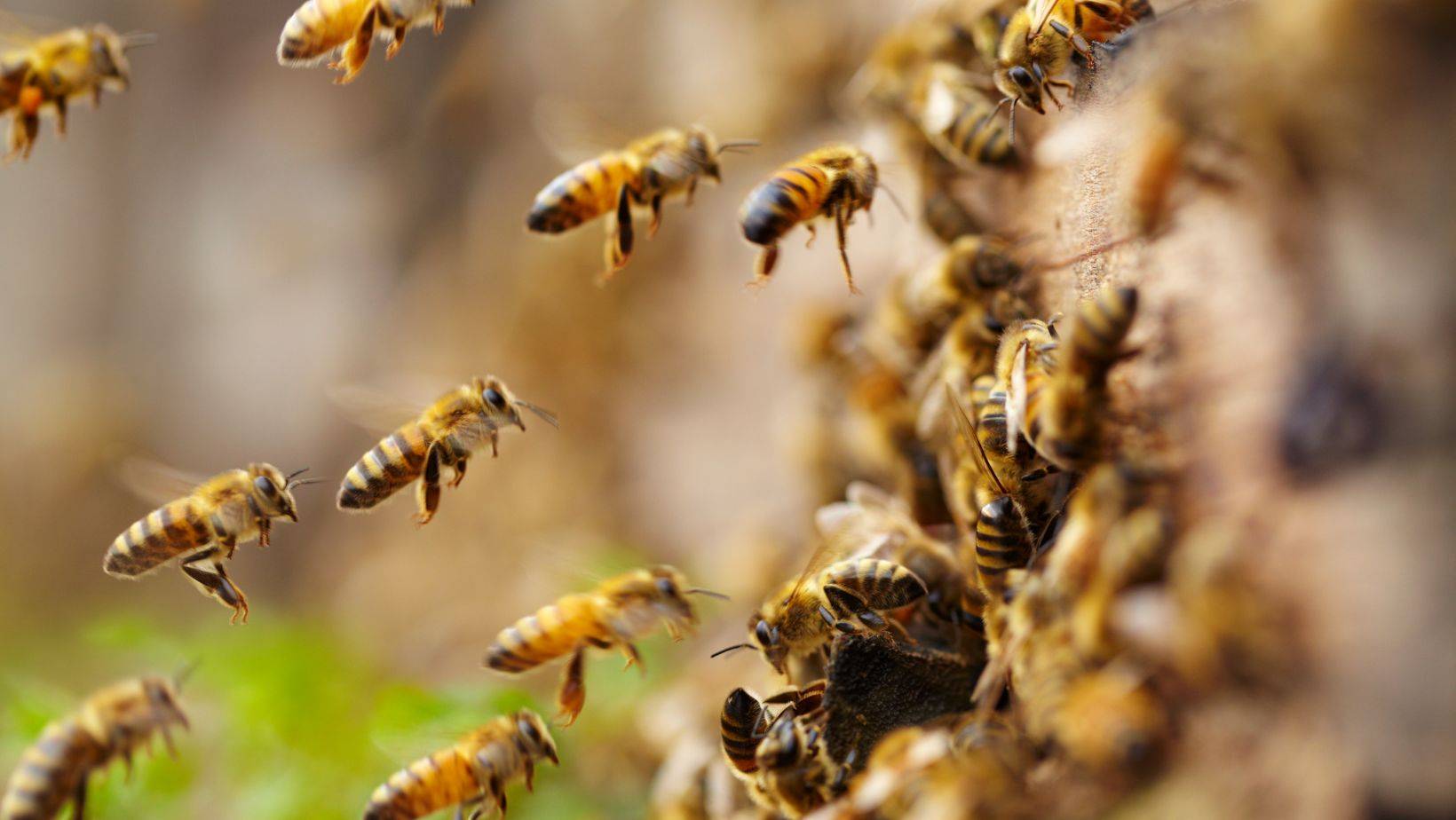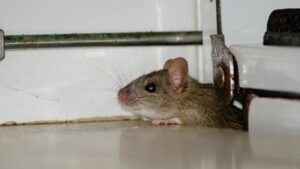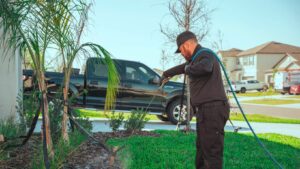Expert Ant Extermination – Safe & Effective Ant Control Solutions
Eco-Friendly Ant Control Solutions

- Ant Extermination
Comprehensive Ant Extermination Services for a Pest-Free Home
1.
Targeted Ant Baiting & Treatment
- Our ant extermination services use professional-grade baiting systems to eliminate entire ant colonies at the source.
2.
Indoor & Outdoor Ant Prevention
- We apply safe, long-lasting treatments to prevent ants from entering your home while protecting outdoor spaces from infestations.
3.
Customized Ant Control Plans
- Our experts assess your property and create personalized ant extermination strategies to ensure effective, long-term pest control.
Expert Guide to Ant Pest Control

Understanding Ant and Stinging Insect Behavior
- Colony Structure: Ants function within a highly organized colony, with a queen responsible for reproduction, worker ants that gather food, and soldier ants that protect the nest.
- Food Sources: Ants are attracted to sugary and protein-rich foods, making kitchen areas, pet food bowls, and trash bins prime targets.
- Communication: Ants use pheromone trails to communicate and guide others to food sources, leading to rapid infestation growth.
- Nesting Habits: Some ants, like carpenter ants, burrow into wood, while others, like fire ants, build large underground colonies.
- Nesting Locations: Wasps, hornets, and yellow jackets build nests in trees, attics, under decks, and inside wall voids.
- Aggressive Defense Mechanisms: Unlike bees, which die after stinging, stinging insects like wasps and hornets can sting multiple times, making them more dangerous.
- Seasonal Activity: Most stinging insects become aggressive in late summer and early fall when their colonies are at their largest.
- Attraction to Sugary Substances: Stinging insects are commonly found near soda cans, fruit trees, and outdoor food areas.
Effective Ant & Stinging Insect Extermination Strategies
- Baiting Systems: Professionally designed bait stations attract worker ants, which then carry the poison back to the colony, effectively eliminating it at the source.
- Direct Chemical Treatments: Liquid and granular insecticides can be applied around the home’s perimeter to prevent ants from entering.
- Natural Deterrents: Substances like diatomaceous earth, vinegar, and peppermint oil can help repel ants when applied to entry points.
- Nest Removal: A professional pest control expert can safely remove and destroy wasp and hornet nests, preventing further infestation.
- Preventative Sprays: Regular application of insect-repellent sprays can discourage stinging insects from building nests around homes and businesses.
- Decoy Nests: Placing artificial wasp nests in outdoor areas can prevent real wasps from settling in, as they avoid occupied spaces.
Long-Term Prevention Tips
- Maintain Cleanliness: Eliminate food crumbs, sugary spills, and standing water to reduce attraction to ants and stinging insects.
- Seal Entry Points: Close cracks in walls, windows, and foundations to prevent pests from entering.
- Regular Inspections: Schedule routine pest control inspections to catch early signs of infestations before they escalate.
- Proper Trash Management: Keep garbage bins sealed to reduce the likelihood of attracting foraging insects.
Why Ant & Stinging Insect Control is Essential
- Painful & Potentially Dangerous Stings: Stinging insects such as hornets, wasps, and yellow jackets can inflict painful stings. In some individuals, these stings may trigger severe allergic reactions, requiring emergency medical care.
- Bacterial Contamination: Ants travel through various unsanitary environments before invading kitchens and food storage areas, potentially spreading harmful bacteria like Salmonella and E. coli.
- Structural Damage to Homes: Carpenter ants are notorious for burrowing through wood, which can weaken the structural integrity of homes and lead to costly repairs.
- Aggressive Nesting Behavior: Wasps and hornets defend their nests aggressively, attacking anyone who comes too close. These nests are often found in high-traffic areas such as attics, trees, under eaves, and even inside wall voids.
- Rapid Colony Growth: Ants and stinging insects reproduce quickly. A minor problem can escalate into a severe infestation within weeks, making early intervention essential.
- Easy Access to Food & Water: Ants are naturally drawn to food sources, including sugar spills, pet food, and kitchen crumbs, while stinging insects seek out protein-rich foods and sweet beverages.
- Unsealed Entry Points: Tiny cracks and crevices in walls, foundations, doors, and windows provide easy entry for ants and stinging insects to infiltrate homes.
- Ideal Nesting Areas: Wasps and hornets favor attics, gutters, sheds, and trees for nesting, while ants prefer warm, hidden spaces under floors or inside walls.
- Lack of Regular Pest Control Treatments: Without proactive pest control measures, colonies can grow undisturbed, leading to widespread infestations.
- Safe & Effective Nest Removal: Attempting to remove wasp or hornet nests without professional assistance can be dangerous. Expert pest control specialists can eliminate nests safely and efficiently.
- Species-Specific Treatments: Different ant and stinging insect species require targeted treatments to ensure complete eradication.
- Environmentally Responsible Solutions: Modern pest control treatments prioritize safety, using eco-friendly and pet-safe solutions for long-term protection.
- Preventative Strategies for Long-Term Protection: Routine inspections, sealing entry points, and scheduled treatments ensure your home remains pest-free.
- Painful Stings & Allergic Reactions: Stinging insects such as hornets, wasps, and yellow jackets can inflict painful stings. Some individuals may experience severe allergic reactions that require emergency medical care.
- Bacterial Contamination: Ants can contaminate food and surfaces, spreading harmful bacteria like Salmonella and E. coli, which pose health risks to families.
- Structural Damage: Carpenter ants burrow through wood, weakening home structures over time and causing costly damage if left untreated.
- Aggressive Nesting Behavior: Wasps and hornets defend their nests fiercely, attacking anyone who comes too close. These nests are often built in attics, wall voids, and under eaves, increasing the risk of accidental encounters.
- Rapid Colony Expansion: Ants and wasps reproduce quickly. A small issue can escalate into a severe infestation in a matter of weeks, making early intervention crucial.
- Easy Access to Food & Water: Ants invade homes in search of food crumbs, sugary spills, and moisture. Stinging insects are attracted to exposed food, garbage, and unsealed beverage containers.
- Unsealed Entry Points: Small cracks and crevices in doors, windows, and walls provide entryways for ants and stinging insects.
- Warm & Sheltered Nesting Areas: Attics, wall cavities, and tree branches make ideal nesting locations for wasps and hornets.
- Lack of Preventative Treatments: Without regular pest control maintenance, colonies can establish themselves undisturbed, leading to widespread infestations.
- Safe & Effective Nest Removal: Professional pest control experts can safely remove wasp nests and ant colonies without risking stings or injuries.
- Customized Treatment Plans: Targeted treatments based on the specific species invading your home ensure efficient and long-lasting results.
- Eco-Friendly & Family-Safe Solutions: Modern pest control solutions eliminate ants and stinging insects without harming pets, children, or the environment.
- Long-Term Prevention: Regular pest control treatments help prevent reinfestations and keep your home pest-free year-round.
- Health Risks from Stings & Bites: Stinging insects like wasps and hornets can deliver painful stings, leading to allergic reactions and severe medical emergencies.
- Food Contamination & Structural Damage: Ants can invade kitchens, pantries, and food storage areas, contaminating food and causing damage to structures.
- Aggressive Nesting Behavior: Hornets and wasps build nests in attics, trees, and wall voids, posing a significant threat to families and pets.
- Rapid Colony Growth: Ant infestations can escalate quickly, making early intervention crucial.
Common Types of Ants and Stinging Insects
- Carpenter Ants: Known for tunneling through wood, which can weaken home structures.
- Fire Ants: Deliver painful, venomous stings and are aggressive when disturbed.
- Sugar Ants: Frequently invade homes in search of food and water sources.
- Wasps & Hornets: Build nests in and around homes, becoming territorial and dangerous when provoked.
- Yellow Jackets: Highly aggressive insects that often nest underground or inside walls.
How to Prevent Ant & Stinging Insect Infestations
- Store Food Properly: Keep all food items, including pet food, in airtight containers to prevent ants from invading.
- Clean Up Spills Immediately: Sugary and greasy residues attract ants and wasps, making your kitchen a hotspot for infestations.
- Take Out the Trash Regularly: Keep trash bins sealed and dispose of garbage frequently to eliminate food sources for pests.
- Wash Dishes and Clean Surfaces Daily: Leftover food particles and residue attract ants and stinging insects looking for sustenance.
- Fix Leaky Pipes and Faucets: Moisture attracts ants, which rely on water sources to survive.
- Clear Gutters and Drainage Systems: Standing water can attract mosquitoes and stinging insects like wasps, which need water for their colonies.
- Remove Water Dishes Overnight: If you have outdoor pet bowls, be sure to empty them at night to avoid attracting pests.
- Seal Cracks and Gaps in Walls: Ants can enter through the tiniest openings, so caulking cracks around windows, doors, and foundations is essential.
- Install Screens and Weather Stripping: Prevent wasps and ants from getting inside by maintaining properly sealed doors, vents, and attic openings.
- Trim Trees and Shrubs Near Your Home: Overgrown vegetation provides nesting spots for stinging insects and easy access for ants.
- Inspect Attics and Basements Regularly: These areas often serve as nesting sites for wasps and other stinging insects.
- Essential Oils for Repellency: Peppermint, tea tree, and citrus oils can deter ants and wasps when applied around entry points.
- Diatomaceous Earth: A natural solution that effectively repels ants by dehydrating them on contact.
- Professional Baiting & Extermination: If an infestation is already present, professional-grade solutions provide long-term protection against ants and stinging insects.
- Seal All Food Sources: Store food in airtight containers and clean up spills immediately.
- Eliminate Standing Water: Repair leaky pipes and remove sources of excess moisture that attract insects.
- Dispose of Trash Properly: Use sealed trash bins to prevent pests from being drawn to waste.
- Clean Outdoor Eating Areas: Wipe down tables and remove crumbs to prevent attraction to picnic spaces.
- Caulk Cracks & Gaps: Seal entry points around windows, doors, and foundations to keep insects out.
- Install Screens & Weather Stripping: Prevent pests from entering through vents, windows, and gaps in doors.
- Trim Vegetation Near Your Home: Cut back bushes, trees, and shrubs to reduce nesting sites for wasps and hornets.
- Remove Potential Nesting Sites: Dispose of old wood, logs, and debris where ants and stinging insects may nest.
- Diatomaceous Earth: A natural remedy that can deter ants from invading indoor spaces.
- Essential Oils: Peppermint and citrus oils can help repel ants when applied to entry points.
- Professional Extermination Services: Comprehensive treatments that provide long-term protection against ants and stinging insects.
Why Professional Ant & Stinging Insect Control is Necessary
- Accurate Pest Identification: Different ant and stinging insect species require specific treatment methods. Professionals can distinguish between species such as carpenter ants, fire ants, and sugar ants, as well as wasps, hornets, and yellow jackets.
- Targeted Treatments: Exterminators use specialized treatments that address the root of the problem, whether it's eliminating a colony inside the walls or safely removing an aggressive wasp nest from an attic or tree.
- Advanced Baiting Strategies: Unlike store-bought sprays, professional baiting techniques target entire ant colonies, ensuring complete eradication rather than temporary surface control.
- Minimized Risk of Stings and Bites: Attempting to remove wasp nests or ant infestations without professional assistance can lead to painful stings and allergic reactions.
- Protecting Your Home’s Structural Integrity: Carpenter ants burrow through wood, weakening beams, flooring, and walls over time. Expert treatments eliminate these threats before costly damage occurs.
- Environmentally Friendly Solutions: Many professional treatments use eco-friendly products that are effective yet safe for families, pets, and beneficial insects like bees.
- Ongoing Monitoring & Maintenance Plans: Professional pest control includes routine inspections and preventative treatments to ensure that ants and stinging insects do not return.
- Entry Point Sealing: Technicians identify and seal access points, preventing new infestations from forming inside walls, attics, or crawl spaces.
- Integrated Pest Management (IPM): This strategic approach combines chemical, biological, and mechanical methods to provide long-lasting pest control with minimal environmental impact.
- Preventing Allergic Reactions and Medical Emergencies: For individuals allergic to insect stings, professional removal of wasps, hornets, and fire ants can be life-saving.
- Reducing Bacterial Contamination Risks: Ants can transport bacteria such as Salmonella and E. coli onto kitchen surfaces, utensils, and food.
- Eliminating Aggressive Nesting Areas: Many stinging insects establish nests in high-traffic areas such as doorways, porches, and playgrounds, increasing the risk of stings to children and pets.
- Advanced Baiting & Treatment Strategies: Custom solutions targeting specific ant species and stinging insect nests.
- Safe & Effective Removal Techniques: Eco-friendly treatments that protect your family and pets.
- Long-Term Prevention Plans: Routine monitoring and preventative treatments to keep your home pest-free.
- Expert Identification & Solutions: Professional assessment to determine the best strategy for eliminating infestations.

Get Professional Ant & Stinging Insect Control from Taps Pest Control – Call Now!
Additional Resources

Effective Pest Control Tips From Taps Pest Control
Are you tired of dealing with unwelcome visitors like insects and rodents in your home? Pest infestations can quickly turn your space into a stressful environment, especially if they take over areas like the attic or kitchen. In this guide, we will share effective pest control tips to help you keep your kitchen free of pests, ensure bathroom sanitation, and prevent stagnant water accumulation. By following these tips, you can create a healthier and safer home while reducing the risk of future infestations from cockroaches and other pests.

Ultimate Pest Control Tips for Florida Homeowners: How to Stop Infestations Before They Start
Tired of insects, rodents, and pests invading your Florida home? Discover expert pest control tips from Taps Pest Control to stop infestations before they start.

Spring Pest Control in Florida: Pest Prevention Tips
Get ahead of the season with expert spring pest control in Florida. As temperatures rise, so does pest activity—especially ants, termites, and mosquitoes. Learn how to protect your home with inspection tips, prevention checklists, and professional solutions from Taps Pest Services.
Frequently Asked Questions About Ant Extermination
How Do I Know If I Have an Ant or Stinging Insect Infestation?
Signs include visible insect activity, nests around your home, and an increase in bites or stings.
Are Ant & Stinging Insect Control Treatments Safe for Pets and Children?
Yes! Our treatments are designed to be pet- and family-friendly while effectively eliminating pests.
How Long Does It Take to Get Rid of an Ant or Stinging Insect Infestation?
Results can be seen within a few days, but full eradication may take a couple of weeks, depending on the infestation severity.
What Can I Do to Prevent Future Infestations?
Regular pest control treatments, proper food storage, and sealing entry points help keep ants and stinging insects away.
How Do I Schedule an Ant & Stinging Insect Control Service?
Simply call (813) 592-7643 to book your appointment today!



